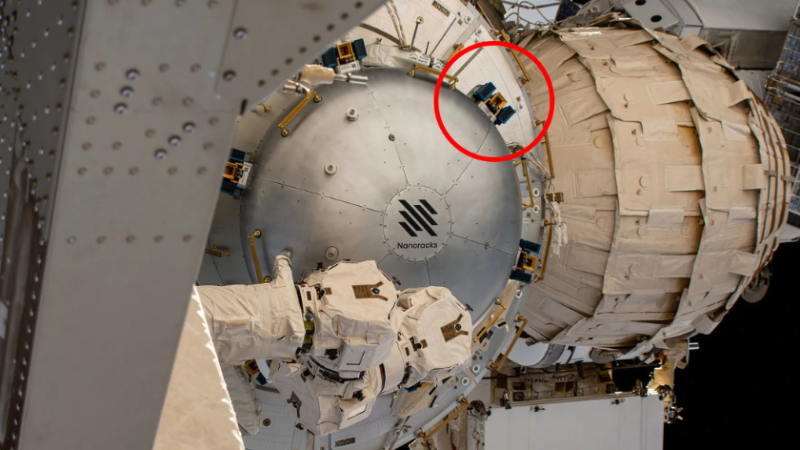The experiment, launching with NASA’s upcoming SpaceX resupply mission, could reveal fundamental insights into ultra-secure, next-gen communications, laying the groundwork for future connections between quantum computers and other equipment.
Subscribe today for free
The Space Entanglement and Annealing QUantum Experiment (SEAQUE) seeks to create new technology suitable for use in space to improve how quantum computers communicate, as well as make communications stronger between quantum systems across sizable distances.
The experiment is integrated on a MISSE-20 (Materials International Space Station Experiment) device, a platform for tests conducted on the outside of the space station so they can be directly exposed to the vacuum of space.
The SEAQUE device will conduct experiments in quantum entanglement while being exposed to the radiation environment of space.

Scientists are aiming to see if the device could enable quantum networks thousands of miles away could be connected.
“SEAQUE will demonstrate a new and never-before-flown entanglement source based on integrated optics,” said Paul Kwiat, the project’s principal investigator at the University of Illinois Urbana-Champaign. “Such a source is inherently much smaller, more robust, and more efficient at producing photon pairs than the bulk optic entanglement sources used in previous space experiments.”
Pairs of entangled photons remain so tightly connected that measuring one instantly affects the other's measurement, even across large distances. Unlike other space-based experiments using bulk optics, SEAQUE generates entangled photons via an integrated waveguide—marking a spacecraft first—where a waveguide serves as a precise "expressway" for photons, preserving their quantum state.
For those without quantum expertise: SEAQUE's experiment aboard the ISS could be a game-changer for ultra-secure, future-ready communication.
“Demonstrating these two technologies builds the foundation for future global quantum networks that can connect quantum computers located hundreds or even thousands of miles apart,” said Makan Mohageg, SEAQUE co-investigator at NASA’s Jet Propulsion Laboratory.
The device will be housed by the Nanoracks Bishop airlock. Once attached, SEAQUE will also test a method to help space-based nodes "self-heal" from radiation damage, which is a constant challenge in maintaining delicate instruments in space.

While detecting signals from Earth is beyond the scope of the technology, SEAQUE will use its detector array to count photons generated by its entanglement source while also using a laser to periodically repair radiation-induced damage that will affect the detector array’s count
“In tests on the ground, we found that this technique causes the defects in the lattice to ‘bubble away’ – a process known as annealing – thereby reducing detector noise and potentially prolonging the life of in-space quantum nodes, facilitating a robust global network,” said Kwiat.
RELATED STORIES
Quantum startup raises $59mn in record-breaking software funding






